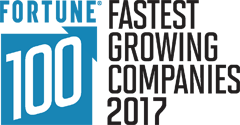Getting Real about the Work and Home Life Balance
It’s a buzz phrase: people need “a work/life balance.” But what does that mean, exactly. And, more importantly, how do you accomplish it?
In his new book, "Leading the Life You Want: Skills for Integrating Work and Life", (published by Harvard Business Review) Stewart Friedman answers those questions, drawing on his experiences as the founder of the Wharton Work/Life Integration Project as well as in-depth interviews with people who have succeeded in finding meaning and harmony in their lives.
Friedman, who is Professor of Management at the University of Pennsylvania’s Wharton School of Business starts off with dissecting what we’ve all heard over and over again – that we should aim for a work/life balance. He writes that the phrase implies we have a certain amount of time for work and then we balance it with time for our personal life.
This may sound good on paper but, he explains, it suggests that our “work” competes with and is separate from our “life” and ignores how work, home, community and our private selves intersect. The goal, he says is to “integrate these areas harmoniously instead of thinking only in terms of trade-offs.”
Friedman acknowledges that you can’t have it all – you will not have complete and equal success and balance in every endeavor at the same time. But by bringing all areas of your life into greater alignment, you can concentrate on harmony rather than conflict. The result? A happier, healthier and more successful life on all levels.
In "Leading the Life You Want", Friedman explains that after studying people in different settings, he’s found that those who are most successful in every area of their lives have developed certain skills centered on being real, whole and innovative. The book includes self-testing to see which of the skills you have, and which you need to master.
For example, “Skills for Being Real” includes being clear and consistent about your core values and using self-awareness to understand how important various aspects of your life are to you. Friedman advises asking yourself to describe the various roles you play - spouse, worker, parent, citizen – and how each contributes to the vision of the future you want.
“Skills for Being Whole,” Friedman explains, "involves communicating with people important to you about expectations you both have of each other and making sure the expectations are clear. This skill set also includes looking for opportunities to help people in order to enrich your own life and the lives of others and building supportive networks with people who share your vision and want to help you realize your goals."
In addition, he discusses “Skills for Being Innovative,” such as being willing to question old habits and the ability to come up with new ways to manage demands in your life. Friedman notes that looking forward to change should be seen as an opportunity, not as something to fear.
The book hones in on specific examples that illustrate these life skills using real-life stories based on his interviews with a variety of successful people including Facebook COO Sheryl Sandberg , rock icon Bruce Springsteen, former Navy Seal Eric Greitens (the founder of the non-profit The Mission Continues to provide veterans with meaningful community service work) and former First Lady Michelle Obama.
If it seems you might have little in common with such high-profile people, think again. Friedman presents inspirational, factual examples of their stresses and challenges as they learned to reduce conflict in their lives and focus on purpose, optimism and harmony.
While Friedman offers his own research and philosophy, he also encourages the reader to respect individual ideas and needs and to stay committed to them. Understand what you need to be healthy and happy and feel balanced in all parts of your life – and stick to it.
For many of the people interviewed, one area they commit to is being physically fit. For example, in describing Tom Tierney, former CEO of Bain and founder of Bridgespan, Friedman writes: “To ensure that he was spending his days wisely, Tierney created what he calls ‘magnets’: commitments that he took as seriously as a partner meeting. One magnet was exercise; Tierney set out time exclusively for himself every morning for a workout.”
However, Friedman emphasizes that there are many ways for you to build a harmonious life. His book is meant to provide tools to help you craft your own approach and to encourage you to be innovative and positive about how all the parts of your life can and should flow together.
“Leading the life you want is a craft,” Friedman writes. “ As with music or writing or dance, or any athletic endeavor, you can always get better at it.”
EbixMarketing


